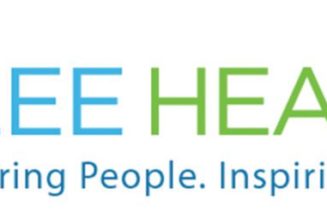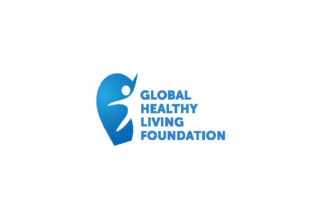Published 1 June 2023
Applies to England
Contents
- Key points
- Background and policy context
- Self-reported good health, mortality rates and healthy life expectancy
- Influences on self-reported health
- Influences on life expectancy
- Implications for public health improvement
- Appendix 1: data and methods
- Appendix 2: bibliography of studies used to explore the association of risk factors to self-reported health
- References
Key points
Key points of the report are:
- healthy life expectancy (HLE) can be defined as ‘a measure of the average number of years a person would expect to live in good health based on contemporary mortality rates and prevalence of self-reported good health’
- improving HLE remains a priority across government. There is a need to better understand what drives HLE to help inform policy
- there are 2 components which determine the measure of HLE used:
- the prevalence of self-reported good health in the population
- mortality rates
- changes in self-reported good health prevalence have a larger impact on HLE than changes in mortality rates
- if mortality rates were to improve by 2% in all age groups from 2017 to 2019 levels, and self-reported health prevalence remained constant, HLE would increase by 0.1 years
- however, if prevalence of self-reported good health were to improve by 2% in all age groups, and mortality rates were to remain constant, the increase in HLE would be 1.3 years
Self-reported health status:
- evidence from research literature, as well as statistical analysis of survey data, suggests chronic health conditions and multimorbidity are the clearest drivers of self-reported poor health
- conditions of the musculoskeletal system (MSK) may warrant particular attention due to the condition’s large, estimated population prevalence (17.2%). Our analysis suggests that those with chronic MSK conditions have over 3 times the odds of reporting poor health than those without
- behavioural and socioeconomic risk factors such as physical activity, smoking status, education and household income are also associated with self-reported poor health in England and likely to have important and complex relationships with each other and physical health status
- importantly, the research literature also highlights the strong association between self-reported poor health and adverse health events, healthcare utilisation and all-cause mortality
Mortality rates:
- deaths from cancer and cardiovascular disease make the largest contribution to years of life lost and therefore have the biggest impact on life expectancy
- tobacco is the risk factor making the largest contribution to years of life lost for both sexes followed by high body mass index (BMI), high cholesterol and high blood pressure
Background and policy context
The Department of Health and Social Care’s (DHSC) priorities include “protecting and levelling up the nation’s health through reducing health disparities.” Healthy life expectancy (HLE) has been identified as a key outcome measure in assessing the extent to which health is improving and disparities are narrowing. It can be defined as ‘a measure of the average number of years a person would expect to live in good health based on contemporary mortality rates and prevalence of self-reported good health’.
Figure 1: diagram summarising the relationship of self-reported health status, mortality rates and healthy life expectancy

The diagram shows 2 rectangles containing the text ‘mortality rates’ and ‘self-reported health status’; both have arrows coming from them pointing to a circle containing the text ‘healthy life expectancy’.
Ambitions around HLE are cited in several policy documents including the Levelling Up the United Kingdom white paper (2022), which outlined the following ‘mission’:
‘By 2030, the gap in Healthy Life Expectancy (HLE) between local areas where it is highest and lowest will have narrowed, and by 2035 HLE will rise by 5 years.’ This ambition was reiterated in January 2023, in a Secretary of State announcement on major health conditions.
Specifically, it is the Office for National Statistics’ (ONS) measure of HLE used to assess progress. See ONS health and life expectancies statistics.
The ONS measure can be defined as a function of mortality rates and the prevalence of self-reported good health (derived mostly from the Annual Population Survey [APS] and in part from the census). The APS is a nationally representative survey, in which participants are asked to rate their general health on a 5-point scale from ‘very bad’ to ‘very good’. Self-reported health is, conventionally, dichotomised so that those reporting ‘very bad’, ‘bad’, or ‘fair’ health are categorised as being in ‘poor health’ and those reporting ‘good’ or ‘very good’ health are categorised as being in ‘good health’.
This report aims to assess the relative impact of mortality rates and self-reported health on HLE and detail the key factors which are most influential in driving these 2 components. It should be noted that factors associated with poorer mortality and self-reported health status are complex, overlapping and likely to interact with one another. For full details of the data and methods used in the analysis, see appendix 1.
Self-reported good health, mortality rates and healthy life expectancy
This section examines the relative impact that self-reported health prevalence and mortality rates have on the ONS calculation of HLE.
Impact of hypothetical changes in self-reported health prevalence and mortality on healthy life expectancy at birth – all ages
Figure 2 shows a hypothetical illustration of how HLE in England would change if self-reported good health prevalence or mortality rates were to improve whilst the other component were to remain constant. This shows that changes in self-reported good health prevalence have a considerably larger impact on HLE than changes in mortality rates.
For example, if mortality rates were to improve by 2% in all age groups from 2017 to 2019 levels, and self-reported good health prevalence remained constant, HLE would increase by 0.1 years for both males and females, to 63.3 years and 63.6 years, respectively.
However, if self-reported good health prevalence were to improve by 2% in all age groups from 2017 to 2019 levels, and mortality rates were to remain constant, the increase in HLE would be much larger. In this case it would increase by 1.3 years for both males and females, to 64.4 years and 64.8 years, respectively.
To achieve the ambition of a 5-year improvement in HLE (using 2017 to 2019 as the baseline), assuming a uniform improvement in each age group, self-reported good health prevalence would need to increase by around 8% for both sexes, if mortality rates were to remain constant. The change in mortality rates required to achieve the same improvement in HLE is much higher; a 60% to 65% reduction in mortality rates for males and females respectively would be needed to achieve a 5-year increase in HLE if self-reported good health prevalence remained constant.
Figure 2: illustration of hypothetical changes in healthy life expectancy if mortality rates or self-reported good health improve from 2017 to 2019 England levels
Males

Females

Source: OHID analysis of ONS mortality, population and self-reported health prevalence data.
Impact of hypothetical changes in self-reported health prevalence and mortality on healthy life expectancy – by age
The analysis above shows how making the same change to mortality rates or self-reported good health prevalence in all age groups at once impacts on overall HLE at birth. However, the impact on HLE is not equal in every age group. For example, an improvement in mortality rates in a younger age group has a bigger impact on HLE than the same change in mortality rates applied to an older age group. The same is also true of self-reported good health prevalence.
Figure 3 shows a hypothetical example of the impact on HLE by age group of a 5% change in self-reported good health prevalence applied to each age group one at a time. Each bar represents the increase in HLE that would occur if the 5% increase in prevalence was applied only to the specified age group whilst all other age groups remained at the baseline prevalence.
Figure 3: illustration of hypothetical changes in healthy life expectancy at birth if self-reported good health prevalence improves by 5% from 2017 to 2019 England levels, by age group

Source: OHID analysis of ONS mortality, population and self-reported health prevalence data
However, although changes in mortality and self-reported good health prevalence in younger age groups have a larger impact on HLE, mortality rates are relatively low and self-reported good health is relatively high in the younger age groups. This means that the potential to increase HLE is smaller than among older age groups.
Figure 4 shows the maximum potential increase in HLE that could be achieved if self-reported good health prevalence increased to the maximum possible level of 100% (everyone in the age group reporting good health). Each bar represents the increase in healthy life expectancy that would occur if 100% prevalence were applied only to the specified age group whilst all other age groups remained at the baseline prevalence.
This shows the potential increases are smaller in the younger age groups. If improvement in only the younger age groups were focussed on achieving the target of a 5-year improvement in HLE, then 100% good health prevalence would need to be achieved in all age groups up to the 45 to 49 age group for males and 40 to 44 age group for females.
Figure 4: illustration of hypothetical maximum increase in healthy life expectancy at birth that could be achieved if self-reported good health prevalence increases to 100% and mortality remains constant, by age group

Source: OHID analysis of ONS mortality, population and self-reported health prevalence data.
Impact of changes in self-reported health prevalence and mortality on healthy life expectancy between 2011 to 2013 and 2017 to 2019
We can also examine how changes in mortality rates and self-reported good health prevalence have impacted on recent trends in healthy life expectancy (HLE). Healthy life expectancy has changed relatively little in recent years. Between 2011 to 2013 and 2014 to 2016, HLE in England increased by 0.1 years for males and decreased by less than 0.1 years for females. Between 2014 to 2016 and 2017 to 2019, HLE decreased by 0.1 years for males and 0.3 years for females. These changes were not statistically significant.
Figure 5 shows a breakdown of these changes according to age group. A positive value for an age group represents an improvement in the mortality rate (red bars) or self-reported good health prevalence (blue bars) which has acted to increase HLE. A negative value means that a worsening in the mortality rate or self-reported good health prevalence in that group acted to decrease HLE.
In both time periods and for both sexes, improving mortality rates have contributed to an increase in overall HLE. However, between 2014 to 2016 and 2017 to 2019 for both sexes, and between 2011 to 2013 and 2014 to 2016 for females, worsening of self-reported good health prevalence has offset these improvements, and led to an overall worsening of HLE.
Analysis shows differing effects in different age groups. Broadly, improvements in both self-reported good health prevalence and mortality rates in older age groups have contributed to an increase in HLE. However, these positive changes have been offset by worsening self-reported good health prevalence, and largely static mortality rates in the younger age groups.
Between 2011 to 2013 and 2014 to 2016 there was generally a worsening in self-reported good health prevalence among those aged under 50, and an improvement among those aged 50 and over. Between 2014 to 2016 and 2017 to 2019, a worsening in self-reported good health prevalence generally occurred among those aged under 60. The impact of the worsening of self-reported good health on HLE was greater in this more recent period.
Figure 5: breakdown of changes in healthy life expectancy over time, England, by age group and component
a) 2011 to 2013 to 2014 to 2016

b) 2014 to 2016 to 2017 to 2019

Source: OHID analysis of ONS mortality, population and self-reported health prevalence data
Influences on self-reported health
This section examines which health and socioeconomic factors are associated with self-reported health and are therefore likely to influence healthy life expectancy.
Health conditions and self-reported health – findings from the literature review
To explore the factors associated with self-reported health, a literature search was undertaken by the UK Health Security Agency (UKHSA) library services and a narrative summary of the results produced by the Population Health Analysis (PHA) team in the Office for Health Improvement and Disparities (OHID).
From the literature review, the most consistent and strongest associations with self-reported poor health were chronic health conditions and multimorbidity. In almost all studies, having a chronic condition significantly increased the odds of self-reported poor health. There was also strong evidence that a cumulative effect of having multiple chronic conditions increased the odds of self-reporting poor health further (for citations of studies used in this section of the report, see appendix 2).
The most frequently studied conditions were those relating to the heart and circulatory system. Evidence of symptomatic events such as stroke and myocardial infarction showed strong associations with self-reported poor health. Diabetes, although studied less, also showed significant and consistent associations with self-reported poor health. A less developed (but notable) evidence-base for the association of other conditions to self-reported poor health also emerged, including musculoskeletal conditions, respiratory conditions, cancers and conditions of the digestive system. In addition to chronic health conditions, poor recent wellbeing and mental ill-health are also identified in numerous studies as being associated with self-reported poor health.
Health conditions and self-reported health – findings from the statistical analysis
In addition to the literature review, a statistical analysis of the 2016 Health Survey for England (HSE) was conducted to assess the strength of associations between these factors and self-reported poor health. The HSE was chosen, rather than the Annual Population Survey (APS), as it provided a richer source of health and behavioural variables to explore – and yet has been shown to provide comparable self-reported health prevalence estimates to the APS.
The results of the analysis are presented as odds ratios (ORs) and a data table of the results can be found in the data pack which accompanies this report. Each OR provides an estimate of the association between self-reported poor health and the factor being assessed. For example, our results show smoking has an OR of 1.76. This suggests that the group that smokes have 1.76 times the odds of reporting poor health when compared to the group that do not smoke. Conversely, an OR of less than 1 would suggest the odds of self-reported poor health are lower for the group with that factor than those without.
This analysis allowed us to explore the findings of the international literature in an England-based cohort and provided some early indications of the size of associations between different risk factors and self-reported poor health.
Findings from this analysis, in relation to health conditions, are detailed in figure 6. Our analysis shows that all the chronic health conditions included were associated with self-reported poor health (except for chronic ear complaints), meaning that those who had a certain chronic health condition had greater odds of reporting poor health than those who did not. However, there was significant variation in the strength of association between the different conditions studied. It should be noted, in this initial analysis, that ‘conditions’ relate to International Classification of Disease[footnote 1] chapter headings rather than specific health conditions.
In addition to the strength of association between the health condition and self-reported poor health, the prevalence of the condition will also be important in determining its overall influence on population-level healthy life expectancy (HLE). Therefore, the estimated prevalence of the conditions (taken from the HSE) are provided in table 1 along with a weighted statistic showing the prevalence multiplied by the strength of its association with self-reported poor health. This was undertaken as a method for ranking the potential influence of different health conditions on population HLE. Conditions of the musculoskeletal system have the largest weighted ORs.
Figure 6: estimates of association between self-reported poor health and health conditions, 2016 Health Survey for England
Note: the model is fully adjusted for all covariates, including behavioural and demographic, although only health conditions are shown here for convenience.

Figure 6 is a forest plot listing chronic conditions and displaying their corresponding adjusted odds ratios. Nervous system disorders are shown to have the largest odds ratio.
Table 1: weighted prevalence estimates of chronic conditions, 2016 Health Survey for England
Note: these prevalence estimates are calculated from the interview-weighted 2016 Health Survey for England data and are derived from participants’ responses to questions about long-term conditions. They are used to guide the ranking of the conditions above but may not conform to other published estimates of disease prevalence.
| Chronic condition | Prevalence % | Poor health prevalence % | Association with self-reported poor health (OR) | Weighted OR (condition prevalence x OR) |
|---|---|---|---|---|
| Musculoskeletal system | 17.2 | 57.7 | 3.12 | 0.54 |
| Heart and circulatory system | 10.7 | 61.5 | 2.46 | 0.26 |
| Nervous system (including dementia) | 4.2 | 69.1 | 5.31 | 0.22 |
| Mental disorders | 7.2 | 57.6 | 2.86 | 0.21 |
| Respiratory system | 7.4 | 52.2 | 2.78 | 0.21 |
| Endocrine and metabolic | 8.9 | 56.1 | 1.79 | 0.16 |
| Digestive system | 4.6 | 58.1 | 2.69 | 0.12 |
| Neoplasms and benign growths | 2.1 | 67.7 | 4.17 | 0.09 |
| Genito-urinary system | 2.6 | 60.0 | 2.59 | 0.07 |
| Eye complaints | 2.6 | 56.7 | 1.81 | 0.05 |
| Ear complaints | 2.7 | 54.2 | 1.81 | 0.05 |
| Blood and related organs | 1.1 | 67.1 | Not modelled | Not applicable |
| Infectious disease | 0.3 | 52.2 | Not modelled | Not applicable |
Table 1 is a table of health conditions and corresponding prevalence percentage estimates, estimates of association with self-reported poor health as odds ratios and a statistic showing the product of prevalence estimate and odds ratio, by which the table is ordered. Musculoskeletal conditions is shown to be at the top of the table.
Behavioural factors and self-reported health – findings from the literature review
Behavioural risk factors and their association to self-reported poor health are also studied in the literature. The most robust and consistent finding identified relates to physical activity – where increased physical activity significantly reduces the odds of self-reporting poor health. In many studies, this association persists after controlling for multiple potential confounders.
Evidence of associations between self-reported poor health and smoking and overweight and obesity are also found – although the relationships are more complex for overweight and obesity, with less clear evidence than for physical activity. Diet related risk factors were studied less in the literature and, where they were considered, showed little evidence of an association with self-reported health.
In multiple studies, alcohol usage is shown to be associated with self-reported good health. However, caution should be exercised when interpreting these findings, as studies[footnote 2] have suggested that patients with a disease may change their alcohol consumption upon diagnosis, or misreport their alcohol consumption in surveys. In relation to our statistical analysis, the population which drink in the Health Survey for England were repeatedly shown to have higher incomes than those who do not – and while income is included in the model as a variable it is unlikely to adjust for all the effects earning more may have on self-reported health (residual confounding).
Behavioural factors and self-reported health – findings from the statistical analysis
Results of our analysis broadly support the findings of the literature and are presented in figure 7.
Figure 7: estimates of association between self-reported poor health and behavioural factors, 2016 Health Survey for England
Note: the model is fully adjusted for all covariates although only behavioural factors are shown here for convenience. MVPA refers to moderate or vigorous physical activity.

Figure 7 is a forest plot listing behavioural factors and displaying their corresponding adjusted odds ratios. Being physically inactive is shown to have the largest odds ratio.
Socio-demographic factors and self-reported health – findings from the literature review
Finally, demographic factors and socioeconomic status are considered in the literature as risk factors for self-reported poor health. In general, there is less homogeneity in the findings across the international literature in terms of which are definitive risk factors for self-reported poor health. For example, there is an increased risk for females to self-report poor health in most of the international literature. However, being male more frequently presents as a risk factor in England based studies.
Similarly, income shows differing degrees of significance across nations. Relatively consistent is the finding that high educational attainment shows positive associations with self-reported good health. A small number of studies found significant associations between self-reported poor health and other wider determinants such as housing problems, elements of inadequate work and social exclusion. It is important to note that wider determinants were studied much less in the literature we identified than biomedical factors, and that a lack of evidence should not be assumed to represent a lack of effect.
Socio-demographic factors and self-reported health – findings from the statistical analysis
Our analysis results, in relation to demographic and socioeconomic factors, are presented in figure 8. Education, household income, being single and age are shown to have statistically notable associations with self-reported poor health.
Figure 8: estimates of association between self-reported poor health and demographic and socioeconomic factors, 2016 Health Survey for England
Note: the model is fully adjusted for all covariates although only demographic factors are shown here for convenience.

Figure 8 is a forest plot listing sociodemographic factors and displaying their corresponding adjusted odds ratios. Being aged 55 to 64 is shown to have the largest odds ratio.
Although it was not the primary aim of the literature review, it emerged that self-reported poor health is shown to be strongly associated with adverse health events, healthcare utilisation and all-cause mortality even after adjustment for sociodemographic, clinical and behavioural risk factors [footnote 3] [footnote 4] [footnote 5] [footnote 6] [footnote 7] [footnote 8] [footnote 9] [footnote 10] [footnote 11] [footnote 12] [footnote 13] [footnote 14] [footnote 15] [footnote 16] [footnote 17] [footnote 18] [footnote 19]. This may imply that a focus on improving self-reported health need not be to the detriment of focusing on other health outcomes such as mortality and life expectancy.
Influences on life expectancy
This section examines the causes of death and risk factors which influence life expectancy.
Figure 9 shows the most common causes of years of life lost (YLL) in England in 2019 based on the Global Burden of Disease (GBD) study. The GBD provides modelled data on YLL, which are years lost due to premature mortality. Deaths from cancer and cardiovascular disease make the largest contribution to YLL and will therefore have the biggest impact on life expectancy. The broad cause of death categories shown in figure 9 are further broken down in the GBD data set. These more detailed breakdowns show that for males, the largest contributors within the broader groups shown in the chart are heart disease, lung cancer, chronic obstructive pulmonary disease, stroke and lower respiratory infections. For females, the largest contributors are heart disease, lung cancer, stroke, breast cancer and chronic obstructive pulmonary disease.
Figure 9: number of years of life lost, selected causes of death, England, 2019
Note: joint YLLs across risk factors shown on the chart are not additive.

Source: Global Burden of Disease Study.
Figure 10 shows the most common risk factors leading to YLL in England in 2019. Tobacco is the risk factor making the largest contribution to YLL for both sexes. This is followed by dietary related risks including high body mass index (BMI), high cholesterol and high blood pressure.
Figure 10: number of years of life lost, selected risk factors, England, 2019.
Note: joint YLLs across risk factors shown on the chart are not additive.

Source: Global Burden of Disease Study
Figures 12 and 12 show a breakdown of changes in life expectancy between 2017 and 2018, and between 2018 and 2019, according to age group and underlying cause of death. As in the section above, a positive value for an age group or cause of death means that there has been an improvement in the mortality rate which has acted to increase life expectancy. A negative value means that a worsening in the mortality rate in that group acted to decrease life expectancy.
Between 2018 and 2019, most causes of death show positive values. This means that death rates from these causes reduced, contributing to an increase in life expectancy. Between 2017 and 2018, there were decreases in mortality in most cause groups but some increases in some cause groups, including the flu and pneumonia and ‘other’ groups for both sexes.
Between 2018 and 2019 most age groups had a reduction in mortality rates and therefore changes in most age groups led to an increase in life expectancy. Between 2017 and 2018, there were increases in mortality rates in some age groups which contributed to a decrease in life expectancy. Age groups over 60 generally made a small positive contribution to life expectancy between 2017 and 2018 and offset some of the decrease in life expectancy.
Figure 11: breakdown of recent trends in life expectancy (LE), England, by age group
a) 2017 to 2018

b) 2018 to 2019

Source: OHID analysis of ONS mortality and population data
Figure 12: breakdown of recent trends in life expectancy (LE) by cause of death, England
a) 2017 to 2018

b) 2018 to 2019

Source: OHID analysis of ONS mortality and population data
Implications for public health improvement
This analysis suggests a greater focus on improving the drivers of self-reported health as well as those of mortality rates would be more fruitful for achieving the governments ambitions. However, this need not be to the detriment of further improving mortality rates, as better self-reported health is independently associated with improved all-cause mortality.
While improvements in self-reported good health prevalence in younger age groups would have an impact on HLE, the potential to increase HLE is smaller than among older age groups. This is because self-reported good health prevalence is already relatively high in younger age groups.
Preventing the onset of chronic conditions and helping those with chronic conditions to improve their health through effective clinical management would be key to improving population level self-reported health and would have a notable impact on healthy life expectancy.
Conditions of the musculoskeletal system stand out as being negatively associated with self-reported health and having a large prevalence among the population. Cardiovascular disease is also notable as a condition with a significant association with self-reported poor health and a key driver of years of life lost.
In addition, the relationship between behavioural risks and wider determinants is also likely to be important – with income, education, physical activity, smoking and other factors all showing associations with self-reported poor health.
While the results of our analysis present risk factors individually, it is important to note that varying exposure to psychosocial and material stressors between population groups[footnote 20], as well as variation in the resources available to cope with such stressors, can lead to differences in their effects on health status and outcomes, including self-reported poor health[footnote 21]. Therefore, the complex relationship between wider determinants of health, psychosocial risk factors, health-related behaviours and physiological risk factors should be noted when attempting to improve healthy life expectancy[footnote 22].
Appendix 1: data and methods
Healthy life expectancy
Healthy life expectancy (HLE) is calculated using abridged Sullivan life tables for males and females separately, by 5-year age band. A Sullivan life table extends the traditional life table by partitioning years lived into favourable and unfavourable health states to provide an estimate of HLE for males and females at birth and by geographical unit.
In addition to the number of deaths and mid-year population estimates used in a traditional life table, the Sullivan life table also incorporates the proportion of people reporting their general health as ‘good’ or ‘very good’ from a data source, in this case from the Annual Population Survey. In answering the question ‘How is your health in general; would you say it was…’ responses of ‘Very good’ and ‘Good’ are categorised as ‘Good’ health while responses of ‘Fair’, ‘Bad’ or ‘Very bad’ are categorised as ‘Not good’ health. See a life table template which illustrates the method used to calculate HLE (and 95% confidence intervals).
Healthy life expectancy figures provided in this report have been calculated using ONS death registration data and mid-year population estimates for the specified years, along with self-reported good health prevalence
Scenario modelling
Healthy life expectancy for 2017 to 2019 has been selected as the baseline period for the analysis in this report because this period was not affected by the COVID-19 pandemic. Mortality rates and self-reported good health prevalence for this period have been used to calculate HLE. Scenario modelling has been undertaken by modifying these mortality rates and self-reported good health prevalence figures proportionally by the amounts specified in the report, in the age groups specified and HLE recalculated using these modified figures to determine the impact of the change on HLE.
Rapid literature search, relating to self-reported health
The UKHSA library services conducted an electronic literature search aimed at answering the following question:
‘What risk factors (i.e., sociodemographic, psychosocial, behavioural, environmental and physical) are associated with self-reported health?’
The search was limited to peer-reviewed research published in the English language after 2011. Search strategies for the following databases were developed: EBSCO Discovery (cross-database search), Medline, PsycInfo, PubMed, Scopus. A total of 676 papers was identified, and an annotated bibliography of results was provided to the Population Health Analysis (PHA) team in the form of an Endnote library.
Studies were screened by one member of staff in the PHA team, and a data extraction form was used to extract the following information: study title, risk factors considered, details on the strength of association to self-reported health (SRH), date, country of study, participants and additional notes.
Where possible, the association of risk factors to SRH was extracted in odds ratios (with appropriate transformations applied to the study results where necessary).
A narrative synthesis of findings from the papers was produced, which focused on the strength of association between risk factors and poor self-reported health.
Cross-sectional analysis of the 2016 Health Survey for England
The Health Survey for England (HSE) covers the population of England living in private households. The HSE 2016 used a stratified random probability sample of households. The sample comprised 9,558 addresses selected at random in 531 postcode sectors.
Multivariable logistic regression was used to assess the association between independent variables in the 2016 Health Survey for England (HSE) and the dichotomous outcome variable of self-reported health. The self-reported health variable was dichotomised so that those reporting ‘Very bad’, ‘Bad’, or ‘Fair’ health were categorised as having ‘Poor health’ (coded as 1) and those reporting ‘Good’ or ‘Very good’ health were categorised as being in ‘Good health’ (coded as 0).
The choice of independent variables was informed by the literature review. As this was an initial exploratory main-effects model, variables were included even if they were found not to improve model fit (if a strong theoretical rationale for their inclusion was identified in the literature). A matrix of correlation coefficients was produced, and variance inflation factor analysis was conducted to assess for multicollinearity and further support with variable selection.
Both crude and full adjusted odds ratios were provided in the model output, with corresponding 95% confidence intervals calculated. All analysis was conducted using R version 4.2.1 via RStudio 2022.07.2.
Strengths of the analysis include:
- the use of a robust method for assessing the relative associations of multiple behavioural, health, socioeconomic and demographic risk factors for poor self-reported health in a generalisable England-specific cohort
Limitations include:
- the cross-sectional nature of the data set which means that causation cannot be inferred from the findings
- as is true of all secondary analysis, the choice of independent variables is limited by what is available in the study data set. In our case there was a strong theoretical rationale from the literature to include chronic health conditions. The most suitable variable to choose was the one comprised of respondents answering that they have a condition expected to last 12 months and then detailing what sort of condition it is. The derived variable informed by this question, however, is provided to us as a summary of the conditions by ICD-101 chapter. This provides us with a limitation as there is a large variety of conditions under each chapter heading from often symptomless conditions, such as hypertension to symptomatic events such as stroke. This means unpicking the contribution of specific conditions is not possible, rather we get an average association size across multiple related conditions
- the data set was collected pre-COVID-19 and the prevalence and impact of infectious disease on self-reported health may have altered
Breakdown of changes in healthy life expectancy over time
The contribution of the 2 components of healthy life expectancy (mortality rate and self-reported good health prevalence) by age to changes in healthy life expectancy (HLE) over time are calculated using a method of ‘decomposition’. The ‘stepwise replacement method’ has been used, as described in the International Handbook of Health Expectancies[footnote 23]. The method alters each element of the input parameters (the age specific mortality rate, and age specific self-reported health prevalence) one element at a time, and after each replacement step the contribution of the parameter would be the newly calculated HLE minus the HLE calculated in the previous step. For example, if the change in HLE between time period 1 and time period 2 was being decomposed, the age specific mortality rates and self-reported health prevalence in time period 1 would be replaced with those in time period 2, one element at a time.
In analysis for this report replacements have been made first on the mortality rate from the youngest to oldest age group, then on self-reported health prevalence from youngest to oldest age group.
Contributions to changes in HLE over time show the amount that HLE has increased or decreased in the later time period due to changes in the mortality rate or self-reported health prevalence since the earlier time period in a given age group, assuming all other rates remained constant. Contributions that increased HLE (that is, where mortality rate has reduced over time, or self-reported good health prevalence has increased over time) have a positive value, while contributions that offset the HLE increase (that is, where mortality rate has increased over time, or self-reported good health prevalence has decreased over time) have a negative value.
Breakdown of changes in life expectancy over time
The contribution of different age bands or causes of death to changes in life expectancy over time are also calculated using a method of ‘life expectancy decomposition’. For life expectancy, the Arriaga III method has been used, as described by Ponnapalli[footnote 24]. The method is based on a life table divided into 5-year age groups. The Arriaga III method for life expectancy is equivalent to the stepwise decomposition described earlier. The contributions of each age group are then distributed into causes of death using a method described by Preston[footnote 25] and others. Contributions are distributed proportionately according to the difference in mortality between time periods by cause of death within each age group.
Contributions to changes in life expectancy over time show the amount that life expectancy has increased or decreased in the later time period due to changes in the mortality rate since the earlier time period, in a given age group or cause of death, assuming all other rates remained constant. Contributions that increased life expectancy (that is, where mortality rate has reduced over time) have a positive value, while contributions that offset the life expectancy increase (that is, where mortality rate has increased over time) have a negative value.
Appendix 2: bibliography of studies used to explore the association of risk factors to self-reported health
Factors associated with self-reported health and health conditions
Abuladze L, Kunder N, Lang K, Vaask S. ‘Associations between self-rated health and health behaviour among older adults in Estonia: a cross-sectional analysis’, BMJ Open 2017: volume 7(6), e013257
Ambresin G, Chondros P, Dowrick C, Herrman H, Gunn JM. ‘Self-rated health and long-term prognosis of depression’, Annals of family medicine 2014: volume 12(1), pages 57-65
Arnsberger P, Lynch U, Li F. ‘The Effects of Caregiving on Women’s Self-Assessed Health Status: An International Comparison’, Health Care for Women International 2012: volume 33(10), pages 878-895
Arroyo E, Renart G, Saez M. ‘How the economic recession has changed the likelihood of reporting poor self-rated health in Spain’, International Journal for Equity in Health 2015: volume 14, page 149
Arruda GO, Santos AL, Teston EF, Cecilio HPM, Radovanovic CAT, Marcon SS. ‘Association between self-reported health and sociodemographic characteristics with cardiovascular diseases in adults’, Revista da Escola de Enfermagem 2015: volume 49(1), pages 60-77
Badawi G, Gariepy G, Page V, Schmitz N. ‘Indicators of self-rated health in the Canadian population with diabetes’, Diabetic Medicine 2012: volume 29(8), pages 1021-1028
Berglund E, Lytsy P, Westerling R. ‘The influence of locus of control on self-rated health in context of chronic disease: a structural equation modeling approach in a cross sectional study’, BMC public health 2014: volume 14, page 492
Burke KE, Schnittger R, O’Dea B, Buckley V, Wherton JP, Lawlor BA. ‘Factors associated with perceived health in older adult Irish population’, Aging & Mental Health 2012: volume 16(3), pages 288-295
Burns RA, Sargent-Cox K, Mitchell P, Anstey KJ. ‘An examination of the effects of intra and inter-individual changes in wellbeing and mental health on self-rated health in a population study of middle and older-aged adults’, Social Psychiatry and Psychiatric Epidemiology 2014: volume 49(11), pages 1849-1858
Christian LM, Iams J, Porter K, Leblebicioglu B. ‘Self-rated health among pregnant women: associations with objective health indicators, psychological functioning, and serum inflammatory markers’, Annals of behavioral medicine: a publication of the Society of Behavioral Medicine 2013: volume 46(3), pages 295-309
Cialani C, Mortazavi R. ‘The effect of objective income and perceived economic resources on self-rated health. International Journal for Equity in Health 2020: volume 19(1), page 196
Cislaghi B, Cislaghi C. ‘Self-rated health as a valid indicator for health-equity analyses: evidence from the Italian health interview survey’, BMC Public Health 2019: volume 19(1), page 533
Clark CR, Ommerborn MJ, Moran K, Brooks K, Haas J, Bates DW, and others. ‘Predicting Self-Rated Health Across the Life Course: Health Equity Insights from Machine Learning Models’, Journal of General Internal Medicine 2021: volume 36(5), pages 1181-1188
Dankner R, Olmer L, Kaplan G, Chetrit A. ‘The joint association of self-rated health and diabetes status on 14-year mortality in elderly men and women’, Quality of Life Research 2016: volume 25(11), pages 2889-2896
Diurlin S, Eriksson MCM, Daka B, Lindblad U, Hellgren M. ‘Men with impaired glucose tolerance have lower self-rated health than men with impaired fasting glucose’, Primary Care Diabetes 2020: volume 14(1), pages 40-46
Falk H, Skoog I, Johansson L, Guerchet M, Mayston R, Hörder H, and others. ‘Self-rated health and its association with mortality in older adults in China, India and Latin America – a 10/66 Dementia Research Group study’, Age and Ageing 2017: volume 46(6), pages 932-939
Feng Q, Zhu H, Zhen Z, Gu D. ‘Self-Rated Health, Interviewer-Rated Health, and Their Predictive Powers on Mortality in Old Age. Journal of Gerontology Series B: Psychological Sciences and Social Sciences 2016: volume 71(3)l, pages 538-550
Gallagher JE, Wilkie AA, Cordner A, Hudgens EE, Ghio AJ, Birch RJ, and others. ‘Factors associated with self-reported health: implications for screening level community-based health and environmental studies’, BMC public health 2016: volume 16l, pages 640
Ge L, Ong R, Yap CW, Heng BH. ‘Effects of chronic diseases on health-related quality of life and self-rated health among three adult age groups’, Nursing & Health Sciences 2019: volume 21(2), pages 214-222
Hetlevik Ø, Vie TL, Meland E, Breidablik HJ, Jahanlu D. ‘Adolescent self-rated health predicts general practice attendance in adulthood: Results from the Young-HUNT1 survey’, Scandinavian Journal of Public Health 2019: volume 47(1), pages 37-44
Hu W, Lu J. ‘Associations of chronic conditions, APOE4 allele, stress factors, and health behaviors with self-rated health’, BMC Geriatrics 2015: volume 15, page 137
Jarbol DE, Rasmussen S, Balasubramaniam K, Elnegaard S, Haastrup PF. ‘Self-rated health and functional capacity in individuals reporting overlapping symptoms of gastroesophageal reflux disease, functional dyspepsia and irritable bowel syndrome – a population based study’, BMC Gastroenterology 2017: volume 17(1), no page numbers
Gandhi K, Lim E, Davis J, Chen JJ. ‘Racial-ethnic disparities in self-reported health status among US adults adjusted for sociodemographics and multimorbidities, National Health and Nutrition Examination Survey 2011-2014’, Ethnicity & Health 2020: volume 25(1), pages 65-78
Mavaddat N, Valderas JM, Linde Rvd, Khaw K, Kinmonth AL. ‘Association of self-rated health with multimorbidity, chronic disease and psychosocial factors in a large middle-aged and older cohort from general practice: a cross-sectional study’, BMC Family Practice 2014, volume 15(185), 25 November 2014
Factors associated with self-reported health and behavioural factors
Abuladze L, Kunder N, Lang K, Vaask S. ‘Associations between self-rated health and health behaviour among older adults in Estonia: a cross-sectional analysis’, BMJ Open 2017: volume 7(6), e013257
Aguilar-Palacio I, Gil-Lacruz AI, Sanchez-Recio R, Rabanaque MJ. ‘Self-rated health in Europe and its determinants: Does generation matter?’, International Journal of Public Health 2018: volume 63(2), pages 223-232
Arber S, Fenn K, Meadows R. ‘Subjective financial well-being, income and health inequalities in mid and later life in Britain’, Social Science and Medicine 2014: volume 100, pages 12-20
Arne M, Lundin F, Boman G, Janson C, Janson S, Emtner M. ‘Factors associated with good self-rated health and quality of life in subjects with self-reported COPD’, International Journal of COPD 2011: volume 6(1), pages 511-519
Arroyo E, Renart G, Saez M. ‘How the economic recession has changed the likelihood of reporting poor self-rated health in Spain, International Journal for Equity in Health 2015: volume 14, page 149
Badawi G, Gariepy G, Page V, Schmitz N. ‘Indicators of self-rated health in the Canadian population with diabetes’, Diabetic Medicine 2012: volume 29(8), pages 1021-1028
Chattopadhyay K, Akagwire U, Biswas M, Moore R, Rajania G, Lewis S. ‘Role of lifestyle behaviours in the ethnic pattern of poor health outcomes in Leicester, England: analysis of a survey data set’, Public Health 2019: volume 170, pages 122-128
Clark CR, Ommerborn MJ, Moran K, Brooks K, Haas J, Bates DW, and others. ‘Predicting Self-Rated Health Across the Life Course: Health Equity Insights from Machine Learning Models’, Journal of General Internal Medicine 2021: volume 36(5), pages 1181-1188
Duncan MJ, Kline CE, Vandelanotte C, Sargent C, Rogers NL, Di Milia L. ‘Cross-sectional associations between multiple lifestyle behaviors and health-related quality of life in the 10,000 steps cohort’, PLOS One 2014: volume 9(4), no page numbers
Elinder LS, Sundblom E, Rosendahl KI. ‘Low physical activity is a predictor of thinness and low self-rated health: Gender differences in a Swedish cohort’, Journal of Adolescent Health 2011: volume 48(5), pages 481-486
Feng Q, Zhu H, Zhen Z, Gu D. ‘Self-Rated Health, Interviewer-Rated Health, and Their Predictive Powers on Mortality in Old Age’, Journal of Gerontology Series B: Psychological Sciences and Social Sciences 2016: volume 71(3), pages 538-550
Frisher M, Mendonça M, Shelton N, Pikhart H, Oliveira Cd, Holdsworth C. ‘Is alcohol consumption in older adults associated with poor self-rated health? Cross-sectional and longitudinal analyses from the English Longitudinal Study of Ageing’, BMC Public Health 2015: volume 15(703), 24 July 2015
Gallagher JE, Wilkie AA, Cordner A, Hudgens EE, Ghio AJ, Birch RJ, and others. ‘Factors associated with self-reported health: implications for screening level community-based health and environmental studies’, BMC public health 2016: volume 16, page 640
Gémes K, Moeller J, Engström K, Sidorchuk A. ‘Alcohol consumption trajectories and self-rated health: findings from the Stockholm Public Health Cohort’, BMJ Open 2019: volume 9(8), e028878
Granger E, Williams G, Nardo Fd, Harrison A, Verma A. ‘The relationship between physical activity and self-rated health status in European adolescents: results of the EURO-URHIS 2 survey’, European Journal of Public Health 2017: volume 27 (supplement 2), pages 107-111
Hu W, Lu J. ‘Associations of chronic conditions, APOE4 allele, stress factors, and health behaviors with self-rated health’, BMC Geriatrics 2015: volume 15, page 137
Factors associated with self-reported health and sociodemographic factors
Abdollahpour I, Mooijaart S, Aguilar-Palacio I, Salimi Y, Nedjat S, Mansournia MA, and others. ‘Socioeconomic status as the strongest predictor of self-rated health in Iranian population; a population-based cross-sectional study’, The Journal of Psychosomatic Research 2019: volume 124, 109775
Abuladze L, Kunder N, Lang K, Vaask S. ‘Associations between self-rated health and health behaviour among older adults in Estonia: a cross-sectional analysis’, BMJ Open 2017: volume 7(6), e013257
Aguilar-Palacio I, Gil-Lacruz AI, Sanchez-Recio R, Rabanaque MJ. ‘Self-rated health in Europe and its determinants: Does generation matter?’, International Journal of Public Health 2018: volume 63(2), pages 223-232
Alvarez-Galvez J, Rodero-Cosano ML, Motrico E, Salinas-Perez JA, Garcia-Alonso C, Salvador-Carulla L. ‘The impact of socio-economic status on self-rated health: study of 29 countries using European social surveys (2002-2008)’, International Journal of Environmental Research and Public Health 2013: volume 10(3), pages 747-761
Ambresin G, Chondros P, Dowrick C, Herrman H, Gunn JM. ‘Self-rated health and long-term prognosis of depression’, Annals of Family Medicine 2014: volume 12(1), pages 57-65
Andrade FCD, Mehta JD. ‘Increasing educational inequalities in self-rated health in Brazil, 1998-2013, PLOS One 2018: volume 13(4), e0196494
Arber S, Fenn K, Meadows R. ‘Subjective financial well-being, income and health inequalities in mid and later life in Britain, Social Science and Medicine 2014: volume 100, pages 12-20
Arroyo E, Renart G, Saez M. ‘How the economic recession has changed the likelihood of reporting poor self-rated health in Spain’, International Journal for Equity in Health 2015: volume 14, page 149
Assari S. ‘Gender differences in the predictive role of self-rated health on short-term risk of mortality among older adults’, SAGE Open Medicine 2016: volume 4, no page numbers
Australian Institute of Health and Welfare (AIHW). ‘Social distribution of health risks and health outcomes: preliminary analysis of the National Health Survey 2007-08’, Australian Government 2012
Aydın K. ‘Self-rated health and chronic morbidity in the EU-28 and Turkey’, Journal of Public Health 2022: volume 30(3), pages 553-565
Bann D, Hamer M, Parsons S, Ploubidis GB, Sullivan A. ‘Does an elite education benefit health? Findings from the 1970 British Cohort Study’, International Journal of Epidemiology 2017: volume 46(1), pages 293-302
Barbieri, PN. ‘Healthy by Association: The relationship between social participation and self‐rated physical and psychological health’, Health and Social Care in the Community 2021: volume 29(6), pages 1925-1935
Bécares L, Nazroo J, Albor C, Chandola T, Stafford M. ‘Examining the differential association between self-rated health and area deprivation among white British and ethnic minority people in England’, Social Science and Medicine 2012: volume 74(4), pages 616-624
Bell CN, Thorpe RJ, LaVeist TA. ‘The Role of Social Context in Racial Disparities in Self-Rated Health’, Journal of Urban Health: Bulletin of the New York Academy of Medicine 2018: volume 95(1), pages 13-20
Boerma T, Hosseinpoor AR, Verdes E, Chatterji S. ‘A global assessment of the gender gap in self-reported health with survey data from 59 countries’, BMC Public Health 2016: volume 16, page 675
Chan CH, Wong HK, Yip PSF. ‘Associations of relative income deprivation with perceived happiness and self-rated health among the Hong Kong Chinese population’, International Journal of Public Health 2017: volume 62(6), pages 697-707
Chiu M, Rahman F, Kurdyak P, Cairney J, Jembere N, Vigod S. ‘Self-rated health and mental health of lone fathers compared with lone mothers and partnered fathers: a population-based cross-sectional study’, Journal of Epidemiology and Community Health 2017: volume 71(5), pages 417-423
Cialani C, Mortazavi R. ‘The effect of objective income and perceived economic resources on self-rated health’, International Journal for Equity in Health 2020: volume 19(1), page 196
Clair A, Reeves A, Loopstra R, McKee M, Dorling D, Stuckler D. ‘The impact of the housing crisis on self-reported health in Europe: multilevel longitudinal modelling of 27 EU countries’, European Journal of Public Health 2016: volume 26(5), pages 788-793
Clark CR, Ommerborn MJ, Moran K, Brooks K, Haas J, Bates DW, and others. ‘Predicting Self-Rated Health Across the Life Course: Health Equity Insights from Machine Learning Models’, Journal of General International Medicine 2021: volume 36(5), pages 1181-1188
Di Gessa G, Grundy E. ‘The relationship between active ageing and health using longitudinal data from Denmark, France, Italy and England’, Journal of Epidemiology and Community Health 2014: volume 68(3), pages 261-267
Doebler S, Glasgow N. ‘Relationships Between Deprivation and the Self-Reported Health of Older People in Northern Ireland’, Journal of Aging and Health 2017: volume 29(4), pages 594-619
Falk H, Skoog I, Johansson L, Guerchet M, Mayston R, Hörder H, and others. ‘Self-rated health and its association with mortality in older adults in China, India and Latin America – a 10/66 Dementia Research Group study’, Age and Ageing 2017: volume 46(6), pages 932-939
Frisher M, Mendonça M, Shelton N, Pikhart H, Oliveira Cd, Holdsworth C. ‘Is alcohol consumption in older adults associated with poor self-rated health? Cross-sectional and longitudinal analyses from the English Longitudinal Study of Ageing’, BMC Public Health 2015: volume 15(703), 24 July 2015
Gallagher JE, Wilkie AA, Cordner A, Hudgens EE, Ghio AJ, Birch RJ, and others. ‘Factors associated with self-reported health: implications for screening level community-based health and environmental studies’, BMC Public Health 2016: volume 16, page 640
Gandhi K, Lim E, Davis J, Chen JJ. ‘Racial-ethnic disparities in self-reported health status among US adults adjusted for sociodemographics and multimorbidities, National Health and Nutrition Examination Survey 2011-2014’, Ethnicity & Health 2020: volume 25(1), pages 65-78
Hu W, Lu J. ‘Associations of chronic conditions, APOE4 allele, stress factors, and health behaviors with self-rated health’, BMC Geriatrics 2015: volume 15, page 137
Gasull M, Pallarès N, Salcedo N, Pumarega J, Alonso J, Porta M. ‘Self-rated health and chronic conditions are associated with blood concentrations of persistent organic pollutants in the general population of Catalonia, Spain’, Environmental Research 2015: volume 143 (part A), pages 211-220
Gémes K, Moeller J, Engström K, Sidorchuk A. ‘Alcohol consumption trajectories and self-rated health: findings from the Stockholm Public Health Cohort’, BMJ Open 2019: volume 9(8), e028878
Lux T, Scherger S. ‘The Effects of Taking Up Employment After Pension Age on Self-Rated Health in Germany and the UK: Evidence Based on Fixed Effects Models’, Work, Aging and Retirement 2018: volume 4(3), pages 262-273
Mindell JS, Knott CS, Ng Fat LS, Roth MA, Manor O, Soskolne V, and others. ‘Explanatory factors for health inequalities across different ethnic and gender groups: data from a national survey in England’, Journal of Epidemiology and Community Health 2014: volume 68(12), pages 1133-1144
Schütte S, Chastang J-F, Parent-Thirion A, Vermeylen G, Niedhammer I. ‘Association between socio-demographic, psychosocial, material and occupational factors and self-reported health among workers in Europe’, Journal of Public Health 2014: volume 36(2), pages 194-204
References
-
World Health Organization. ‘ICD-10: international statistical classification of diseases and related health problems’, World Health Organization, Geneva, 2004
-
Stockwell T, Donath S, Cooper-Stanbury M, Chikritzhs T, Catalano P, Mateo C. ‘Under-reporting of alcohol consumption in household surveys: a comparison of quantity–frequency, graduated–frequency and recent recall’, Addiction 2004: volume 99(8), pages 1024-1033
-
van der Linde RM, Mavaddat N, Luben R, Brayne C, Simmons RK, Khaw KT, and others. ‘Self-Rated Health and Cardiovascular Disease Incidence: Results from a Longitudinal Population-Based Cohort in Norfolk, UK’, PLoS ONE 2013: volume 8(6), pages 1-8
-
Waller G, Janlert U, Norberg M, Lundqvist R, Forssén A. ‘Self-rated health and standard risk factors for myocardial infarction: a cohort study’, BMJ Open 2015: volume 5(2): e006589
-
Singh JA, Howard V, Cushman M, Safford M, Howard G, Muntner P. ‘Self-rated health is an independent predictor of incident stroke: The reasons for geographic and racial differences in stroke (REGARDS) study’, Stroke Conference 2012: volume 43 (2 meeting abstracts)
-
Zhao J, Yiengprugsawan V, Seubsman SA, Kelly M, Bain C, Sleigh A. ‘Self-reported health and subsequent mortality: an analysis of 767 deaths from a large Thai cohort study’, BMC Public Health 2014: volume 14, page 860
-
Tamayo-Fonseca N, Nolasco A, Quesada JA, Pereyra-Zamora P, Melchor I, Moncho J, and others. ‘Self-rated health and hospital services use in the Spanish National Health System: a longitudinal study’, BMC health services research 2015: volume 15, page 492
-
Giltay EJ, Vollaard AM, Kromhout D. ‘Self-rated health and physician-rated health as independent predictors of mortality in elderly men’, Age and Ageing 2012: volume 41(2), pages 165-171.
-
Grool AM, de Borst GJ, Algra A, Geerlings MI, Doevendans PA, Van Der Graaf Y, and others. ‘Self-rated health status as a risk factor for future vascular events and mortality in patients with symptomatic and asymptomatic atherosclerotic disease: The SMART study’, Journal of Internal Medicine 2012: volume 272(3), pages 277-286
-
Hanson CR, St John PD, Tate RB. ‘Self-Rated Health Predicts Mortality in Very Old Men-the Manitoba Follow-Up Study’, Canadian Geriatrics Journal 2019: volume 22(4), pages 199-204
-
Hoffman RM, Koyama T, Albertsen PC, Barry MJ, Daskivich TJ, Goodman M, and others. ‘Self-Reported Health Status Predicts Other-Cause Mortality in Men with Localized Prostate Cancer: Results from the Prostate Cancer Outcomes Study’, Journal of general internal medicine 2015: volume 30(7), pages 924-934
-
Holseter C, Dalen JD, Krokstad S, Eikemo TA. ‘Self-rated health and mortality in different occupational classes and income groups in Nord-Trondelag County, Norway’, Tidsskrift for den Norske laegeforening : tidsskrift for praktisk medicin, ny raekke 2015: volume 135(5), pages 434-438
-
Hua X, Lung TWC, Woodward M, Salomon JA, Hamet P, Harrap SB, and others. ‘Self-rated health scores predict mortality among people with type 2 diabetes differently across three different country groupings: findings from the ADVANCE and ADVANCE-ON trials’, Diabetic medicine: a journal of the British Diabetic Association 2020: volume 37(8), pages 1379-1385
-
Lorem G, Cook S, Leon DA, Emaus N, Schirmer H. ‘Self-reported health as a predictor of mortality: A cohort study of its relation to other health measurements and observation time’, Scientific Reports 2020: volume 10(1), page 4886
-
Park G, Chung W. ‘Self-rated health as a predictor of mortality according to cognitive impairment: findings from the Korean Longitudinal Study of Aging (2006-2016)’, Epidemiology and health 2021: volume 43: e2021021
-
Szybalska A, Broczek K, Puzianowska-Kuznicka M, Slusarczyk P, Chudek J, Skalska A, and others. ‘Self-rated health and its association with all-cause mortality of older adults in Poland: The PolSenior project’, Archives of Gerontology and Geriatrics 2018: volume 79, pages 13-20
-
Tamayo-Fonseca N, Quesada JA, Nolasco A, Melchor I, Moncho J, Pereyra-Zamora P, and others. ‘Self-rated health and mortality: a follow-up study of a Spanish population’, Public Health 2013: volume 127(12), pages 1097-1104
-
Torres-Collado L, García de la Hera M, Compañ-Gabucio LM, Oncina-Cánovas A, González-Palacios S, Notario-Barandiaran L, and others. ‘Self-reported health status and mortality from all-causes of death, cardiovascular disease and cancer in an older adult population in Spain’, PloS one 2022: volume 17(1): e0261782
-
Xu H, Dupre ME, Granger BB, Churchill E, Curtis LH, Peterson ED. ‘Self-reported health status and 30-day hospital readmission in cardiovascular disease’, Circulation Conference: Resuscitation Science Symposium, ReSS 2017: volume 136 (supplement 1)
-
Aldabe B, Anderson R, Lyly-Yrjänäinen M, Parent-Thirion A, Vermeylen G, Kelleher CC, and others. ‘Contribution of material, occupational and psychosocial factors in the explanation of social inequalities in health in 28 countries in Europe’, J Epidemiol Community Health 2011: volume 65(12), pages 1123-1131
-
Schütte S, Chastang J-F, Parent-Thirion A, Vermeylen G, Niedhammer I. ‘Association between socio-demographic, psychosocial, material and occupational factors and self-reported health among workers in Europe’, Journal of Public Health 2014: volume 36(2), page 194-204
-
Labonte R. ‘Heart health inequalities in Canada: modules, theory and planning’, Health Promotion International 1992: volume 7(2), pages 119-128
-
Jagger C, Crimmins E, Saito Y, Yokota R, Oyen H, Robine J-M. ‘International Handbook of Health Expectancies’ 2020
-
Ponnapalli KM. ‘A comparison of different methods for decomposition of changes in expectation of life at birth and differentials in life expectancy at birth’, Demographic Research 2005: volume 12, pages 141-172
-
Preston S, Heuveline P, Guillot M. ‘Demography: Measuring and Modeling Population Processes’, Wiley 2000











